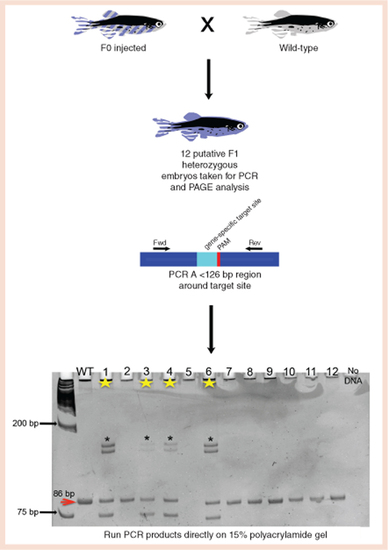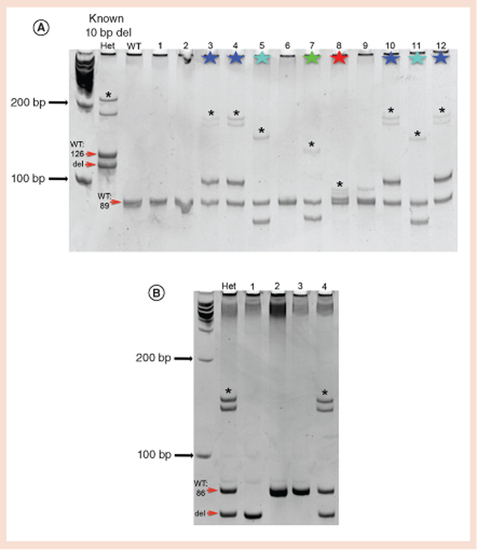- Title
-
A PAGE screening approach for identifying CRISPR-Cas9-induced mutations in zebrafish
- Authors
- VanLeuven, A.J., Park, S., Menke, D.B., Lauderdale, J.D.
- Source
- Full text @ Biotechniques
|
F0-injected zebrafish are grown to adulthood and outcrossed to a wild-type zebrafish. 12 embryos from this outcross are sacrificed for genomic DNA extraction and PCR analysis of the region encompassing the target site. PCR products are directly run on a 15% polyacrylamide gel. This gel represents an outcross in which the F0-injected founder is carrying a single 10-bp deletion at |
|
|


